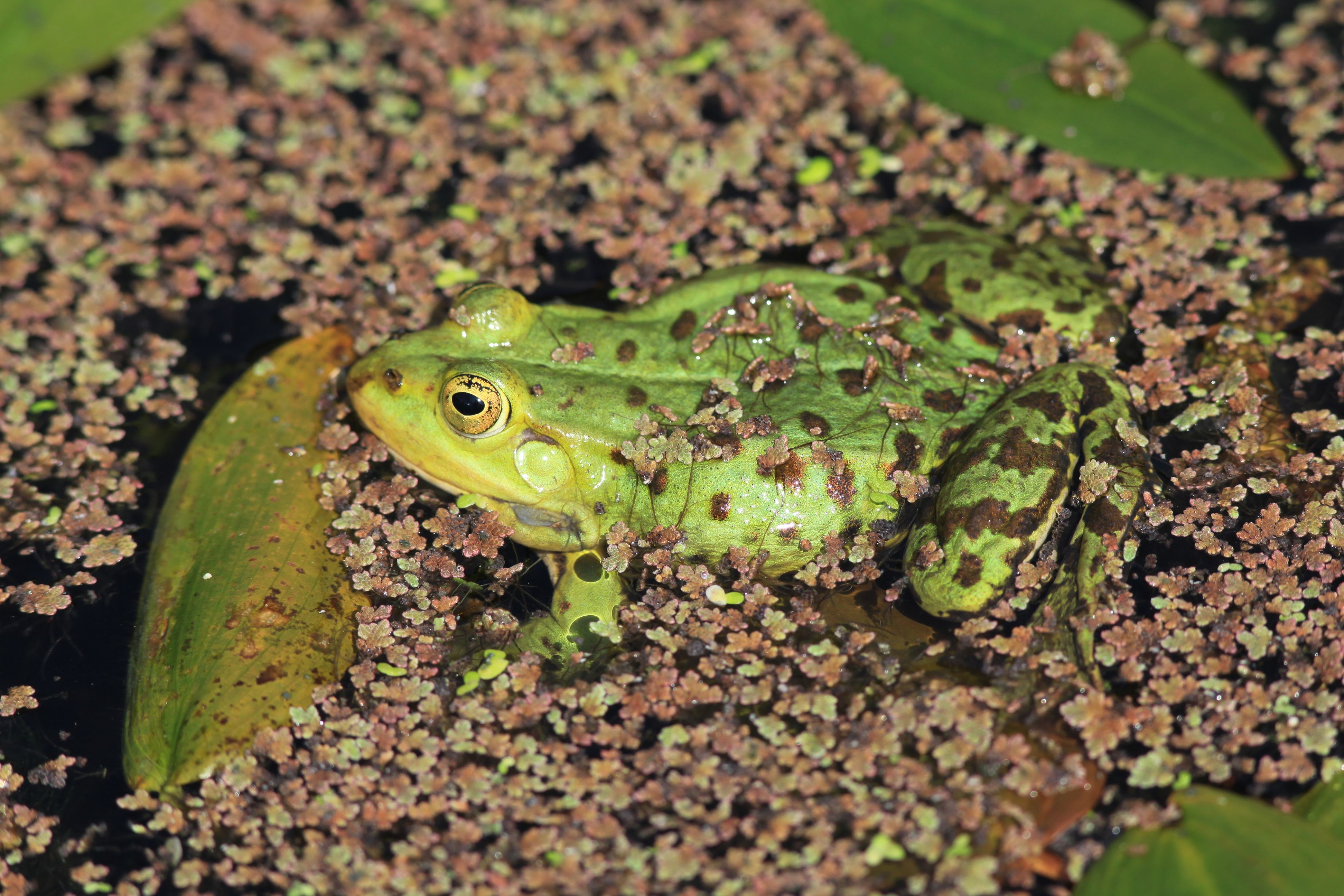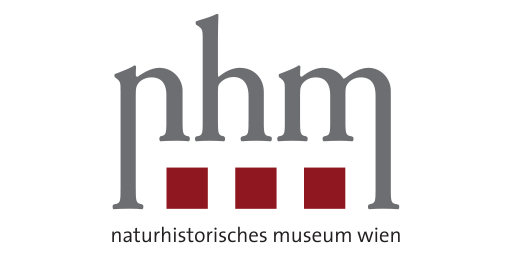Water frog species may be hard to tell apart.
Also known as green frogs. The species in this complex are easily confused with one another, partly due to various hybridisations. The following three species are native to Austria.
Pool frog
Scientific name: Pelophylax lessonae
The smallest representative of the water frogs, easily confused with the other species from this complex.
Description
The body length of the males is 4.5 to 5.5 cm – they are therefore only slightly larger than a European tree frog – the females are 5.5 to 6.5 cm long. The upper side is predominantly grass green in colour and speckled with rather regular black or brown spots. They also have the central dorsal line typical of water frogs and reddish glandular ridges on the sides of the back.
Habitat
The Pool frog is not as strictly bound to bodies of water as its relatives, the Edible frog and the Marsh frog. It favours smaller, vegetation-rich ponds, pools and ditches as well as surrounding swamps and bogs as spawning waters. The species is rarely found in large lakes and rivers.
Breeding call
The buzzing or creaking mating calls are emitted in increasingly louder intervals (3–5 per interval), are significantly quieter than those of the Marsh frog and stop abruptly. The calls are quieter than those of the other two native water frog taxa and do NOT contain any laughing or croaking passages that would be characteristic of the Marsh frog.
Example breeding call:
Creative Commons Licence Simeon Lukanov Attribution-NonCommercial-ShareAlike 4.0 International
Source: The text is an excerpt from Wikipedia (https://de.wikipedia.org/wiki/Kleiner_Wasserfrosch) and is available there under the licence „Creative Commons Attribution/Share Alike“. The text on the call consists of excerpts from Wikipedia with changes according to herpetofauna.at (https://herpetofauna.at/index.php/wasserfrosch; as of 09 August 2023).
Marsh frog
Scientific name: Pelophylax ridibundus
The largest native water frog.
Description
The body length ranges from 10 to 16 centimetres; specimens over 10 centimetres are usually females. The upper side is usually olive-green or olive-brown in colour, with distinct dark spots. The green dorsal midline is usually present. The insides of the thighs are white-grey and black marbled. In contrast to the other native water frogs, the hind legs are very long in relation to the torso.
Habitat
The Marsh frog has a very close relationship with bodies of water. Even young animals only move a few metres away from the water. It favours larger, standing bodies of water in the floodplain area, which rarely freeze over completely or for long periods. For example, lakes, oxbow lakes, flood channels, calm river sections, brackish waters, larger ponds and quarry ponds, sometimes also canals and wide ditches. Rich aquatic and riparian vegetation is an advantage, but there should be no shading by woody plants.
Breeding call
The males call "oaek, oaek" (territorial call) and loudly and sonorously "reck-keck-keck-keck-keck" (mating call) in a choppy sound sequence, so that it sounds like a powerful laugh.
Example breeding call:
Creative Commons Licence Dimitǎr Boevski Attribution-ShareAlike 4.0 International
Source: The text is an excerpt from Wikipedia (https://de.wikipedia.org/wiki/Seefrosch) and is available there under the licence „Creative Commons Attribution/Share Alike“. The text on the call consists of excerpts from Wikipedia with changes according to herpetofauna.at (https://herpetofauna.at/index.php/wasserfrosch; as of 23 November 2023).
Edible frog
Scientific name: Pelophylax kl. esculentus
The Edible frog is a hybrid (mixture) of the Marsh frog and the Pool frog.
Description
While the bodylength of the males is up to 9 cm, the females grow up to 11 cm long. In "normal cases", the upper side is grass green in colour – occasionally also brown – and is characterised by a light green line along the middle of the back and two clearly protruding dorsal glandular ridges. Dark spots and blotches are also often recognisable. Depending on the genetic composition, the individuals resemble either the Pool frog or the Marsh frog.
Habitat
The Edible frog is relatively closely tied to bodies of water all year round, but not as much as the Marsh frog. The animals also undertake longer land migrations and probably overwinter predominantly terrestrially. Permanent, open still waters are favoured as spawning and living waters, especially ponds and semi-natural pools.
Breeding call
The mating calls are a variety of buzzing or growling individual calls, but never chittering, laughing calls as in the Marsh frog. The calls are also not as buzzing as those of the Pool frog, but are somewhat more clearly audible to the human ear in their individual tone sequences and louder.
Example breeding call:
Creative Commons Licence Baudewijn Odé Attribution-ShareAlike 4.0 International
Source: The text is an excerpt from Wikipedia (https://de.wikipedia.org/wiki/Teichfrosch) and is available there under the licence „Creative Commons Attribution/Share Alike“. The text on the call consists of excerpts from Wikipedia with changes according to herpetofauna.at (https://herpetofauna.at/index.php/wasserfrosch; as of 23 November 2023).

 DE
DE  EN
EN 

















